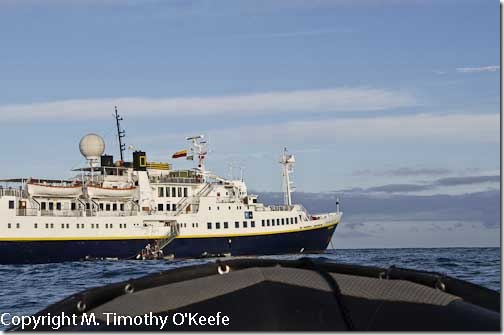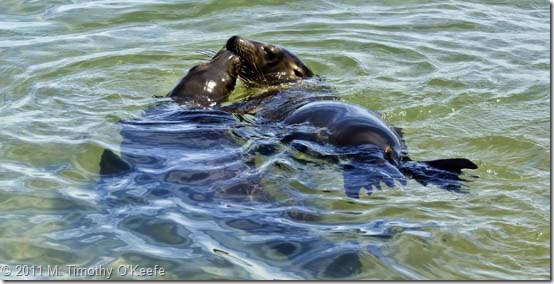Journey Log: Day 1
The lifeboat drill is one of the first things that happens on every cruise, and it’s no different on the Lindblad National Geographic Endeavour. Normally, once the drill is over, you stuff your lifejacket away in your cabin and that’s the last you see of it. It doesn’t work that way here, not with repeated Zodiac shuttles to Galapagos landfalls throughout the week, sometimes two and three times a day.
Fortunately, these life jackets aren’t floppy or overly bulky. Size-wise, it’s like buckling two large flattened deli salamis to your chest; yes, that sounds weird but I can’t think of anything else that compares in size, though these salamis are virtually weightless. Between trips, they’re cleverly stowed just inside our cabin door in what would normally be a wooden magazine rack.
Following the lifeboat drill, it’s time for our first visit to the Endeavour’s dining room, which is going to become one of our favorite places. The lunch menu posted at the entryway is an interesting one: Ecuadorian potato & cheese soup with avocado, pasta salad with vegetables, Asian stir-fry with peanut sauce, yellow rice, braised chicken with veggies and fried bananas. Hmmm, I suspect we won’t see a hot dog or a hamburger all week. (I’m right.)
In the afternoon we make our first shore excursion at a location many ships use as a first stop after picking up passengers in Baltra: Las Bachas on Santa Cruz Island, an island we’ll return to toward the end of the voyage. Las Bachas is bad Spanish pronunciation of “barges,” whose rusty metal posts stick out of the sand here. These World War II relics are reminders of the U.S. presence here when Ecuador authorized the US to establish a naval base at Baltra Island. The U.S. also built Baltra’s airstrip, the same one where we landed. The runway allowed the U.S. Army Air Force to patrol the Pacific for German submarines and also have the capability of defending the Panama Canal from attack.
Las Bachas’ white sandy beach is known as an important nesting site for Pacific green sea turtles, though we’re not present in the height of the egg-laying season. The one bird we might see at Las Bachas but not elsewhere is the pink flamingo.
As our Zodiac lands, we spot two birds I can just as easily find back in Florida: a great blue heron and a brown pelican. However, the species that reside in the Galapagos are considered different enough from their mainland cousins to be endemic and unique to this region. The great blue heron does its usual shoreline stalking, looking for fish. The antics of the brown pelican are hilarious. For between 10 and 15 minutes, it vigorously grooms itself, going through contortions I didn’t know were possible and have never seen any pelican perform before.
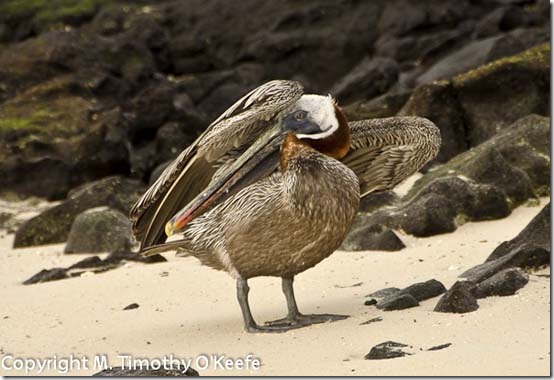
The brown pelican going through contortions
The heavy clouds of the garua look as if they might move out of the way and allow the setting sun to appear today for the first time. From the beach where we landed, we hike a brief distance past several large cactus to reach the striking white sand beach on the northern end of Santa Cruz. The sun finally slips from behind the clouds during its final hour of the day. It’s the wonderful “golden hour” where everything is bathed in a soft, warm color. And it’s because of those wonderful colors I’m turning the rest of this post over to the photos.
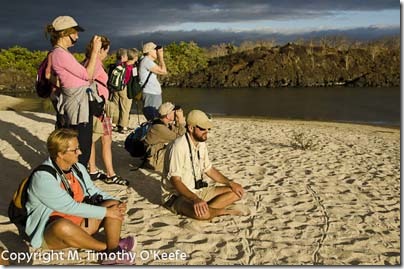
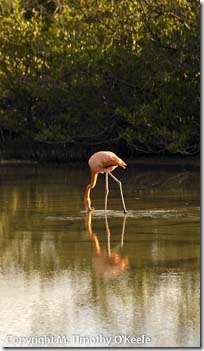
Our group watching the lone flamingo wading in a mangrove pond behind the beach
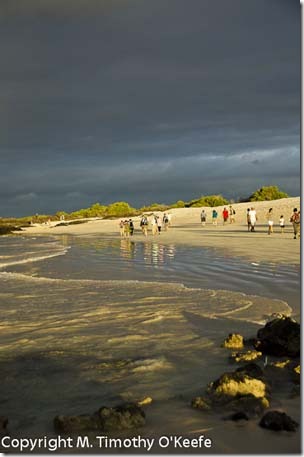
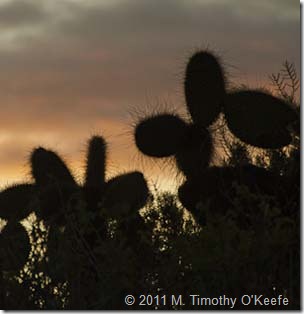
Walking the beautiful sandy beach at Las Bachas on the northern end of Santa Cruz
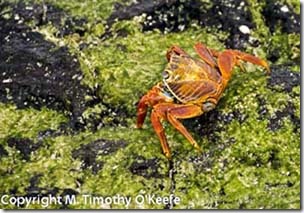
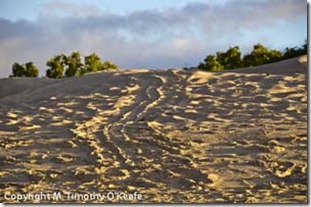
Sally Lightfoot crab in a tidal pool; tracks made by a sea turtle nesting above high tide
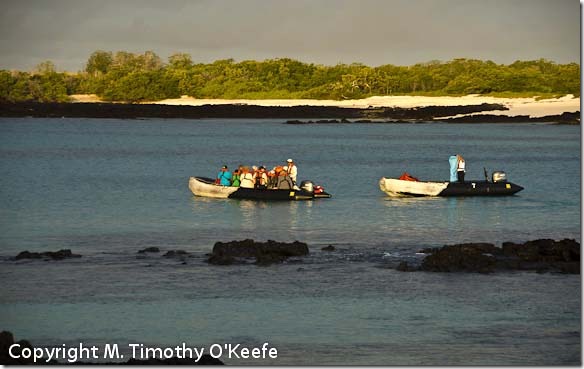
A good end to a good day as the Zodiacs head back to the Endeavour
Lindblad Endeavour Galapagos Cruise Links
The Galapagos Experience Endeavour Dining
Galapagos Adventure Upcoming Sustainable Dining Policy
How Darwin Saved The Galapagos Saturday Dining Menus
Galapagos Photo Tips Sunday Dining Menus
What To Pack For Cruise Monday Dining Menus
Getting to Guayaquil Tuesday Dining Menus
Las Bachas Shore Landing Wednesday Dining Menus
North Seymour Shore Landing Thursday Dining Menus
Fernandina & Isabela Islands Friday Finale Menus
Urbina Bay Shore Landing Endeavour Recipes
Life Aboard The Endeavour
More About Life On Board
Puerto Egas Shore Landing
Endeavour’s Floating SPA
Meeting One of World’s Rarest Animals
Puerto Ayoro Walking Tour
Santa Cruz Highlands Tour
Hunting Tortoises in the Santa Cruz Highlands
San Cristobal, Endeavour’s final stop

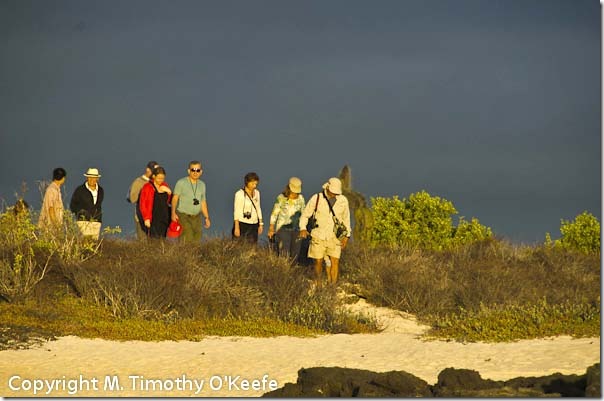
 Follow
Follow